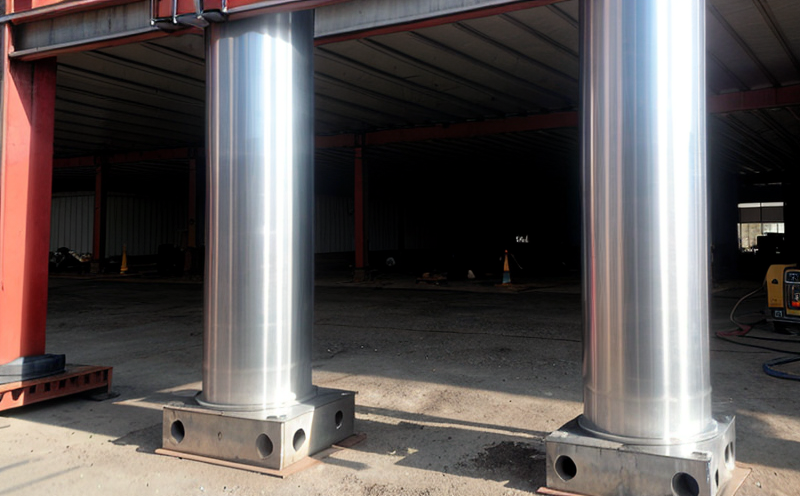Steel column alignment inspection
The process of inspecting steel columns for alignment is a critical aspect within the construction and building sectors. Steel columns are essential structural elements that provide vertical support in buildings, bridges, and other structures. Properly aligned columns are crucial to ensure the stability, safety, and longevity of these constructions.
Alignment inspection involves assessing whether the column axes are correctly positioned relative to each other and their intended design specifications. This process is vital as even slight misalignments can lead to significant structural issues over time. For instance, in high-rise buildings or large-span structures, misaligned columns could cause uneven load distribution leading to structural failure.
During the inspection, various instruments are utilized such as laser alignment tools, total stations, and electronic leveling devices. These tools help in measuring deviations from the expected centerline of the column. The accuracy required for these measurements is often very high, typically within millimeters or fractions thereof depending on the scale of the project.
Once the inspection has been completed, detailed reports are generated detailing any discrepancies found along with recommendations for corrective actions if necessary. Compliance with relevant standards like ISO 17025 ensures that all inspections meet international quality and reliability benchmarks.
- Laser Alignment Tools: Precision instruments used to measure small angles between structural components.
- Total Stations: Combines a theodolite with electronic distance measurement for precise positioning.
- Electronic Leveling Devices: Used to determine horizontal levels ensuring that structures are built on flat surfaces.
The importance of this inspection cannot be overstated, especially in regions prone to natural disasters. Properly aligned columns enhance the structural integrity of buildings making them more resilient against earthquakes and high winds.
In conclusion, steel column alignment inspection is not just a routine task but an essential element in ensuring the safety and durability of any construction project involving steel structures.
Quality and Reliability Assurance
- Laser Alignment Tools: Ensures precision measurements, critical for high-tolerance alignment requirements.
- Total Stations: Provides accurate positioning data which is crucial for complex structural setups.
- Electronic Leveling Devices: Guarantees horizontal stability contributing to overall structural integrity.
The use of these tools helps in maintaining high standards, ensuring that every aspect of the inspection meets stringent quality criteria. Compliance with ISO 17025 further reinforces this commitment by providing independent assurance of competence and impartiality.
Regular calibrations and maintenance of equipment are also part of our quality assurance process. This ensures that all instruments remain accurate throughout their operational lifetimes, thereby maintaining consistent results across multiple inspections.
International Acceptance and Recognition
The importance of alignment inspection in steel columns is recognized globally through adherence to international standards. Compliance with these standards ensures that all structures meet the highest quality benchmarks, promoting safety and reliability.
For instance, ISO 17025 accreditation signifies that our laboratory adheres to strict quality management systems. This not only enhances trust but also facilitates easier collaboration across borders as it aligns with recognized international practices.
The acceptance of our inspection reports in multiple countries further underscores the significance and reliability of our services. Clients can be assured that their projects will meet global standards, fostering confidence among stakeholders from diverse jurisdictions.
Environmental and Sustainability Contributions
The alignment inspection process plays a crucial role in promoting sustainability within the construction sector by ensuring efficient use of resources. Properly aligned columns contribute to energy efficiency as they help distribute loads evenly, reducing the strain on supporting structures.
This leads to lower maintenance costs over time since misaligned components are more likely to deteriorate faster due to uneven stress distribution. Additionally, using precise alignment techniques can reduce material waste during construction by minimizing errors that might necessitate rework or corrections later in the project lifecycle.
By adhering to stringent quality and reliability standards, we contribute positively towards sustainable practices. Our commitment to accuracy and precision not only enhances structural integrity but also supports environmental conservation efforts within the built environment.





